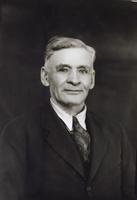Alexander Monkman was a Red River Métis who became a rancher, and in 1898 joined the Klondike Gold Rush. Failing to reach the Yukon, he was hired by the firm of Bredin and Cornwall (see James Cornwall) to open a trading post on the Grande Prairie in what is now northwestern Alberta. In 1899 Monkman selected a site off Lake Saskatoon and moved there with his wife, Louisa (née Tate), becoming the first non-Hudson's Bay Company resident trader in the region. In 1902 Alex Monkman and Louis Calliou grew the first grain on the prairie, which, as the largest open parkland north of Edmonton, would one day become famous for high yields. In 1906 Monkman began a ranch off nearby Bear Lake, and in 1910 opened a homestead off nearby Cutbank Lake.
Alex Monkman was a constant advocate of roads to the Grande Prairie. In the early 1920s he and some companions discovered a pass lower than the Yellowhead Pass through the Rocky Mountains. With his urging the Dominion government considered this for a railway to the Pacific Ocean but later rejected the idea. In the late 1930s Monkman led a volunteer effort to build a road through what was now called the Monkman Pass, gaining much attention. The project died with World War II, but in 1981, a scenic part of the pass became Monkman Provincial Park. In 2001 Monkman's homestead was designated an Alberta provincial historic resource.

 Share on Facebook
Share on Facebook Share on X
Share on X Share by Email
Share by Email Share on Google Classroom
Share on Google Classroom

